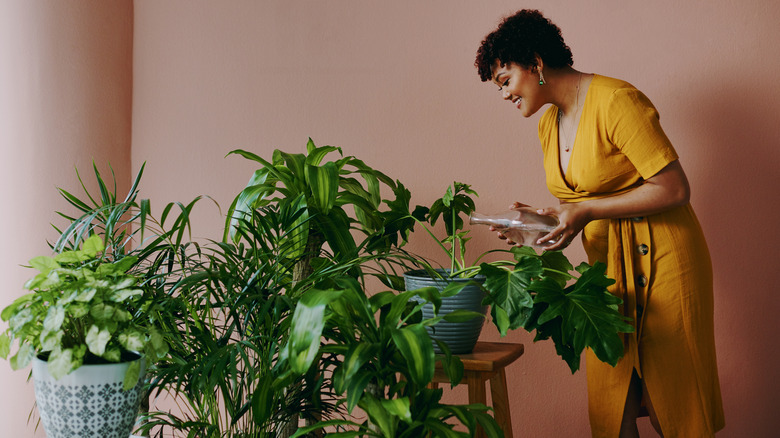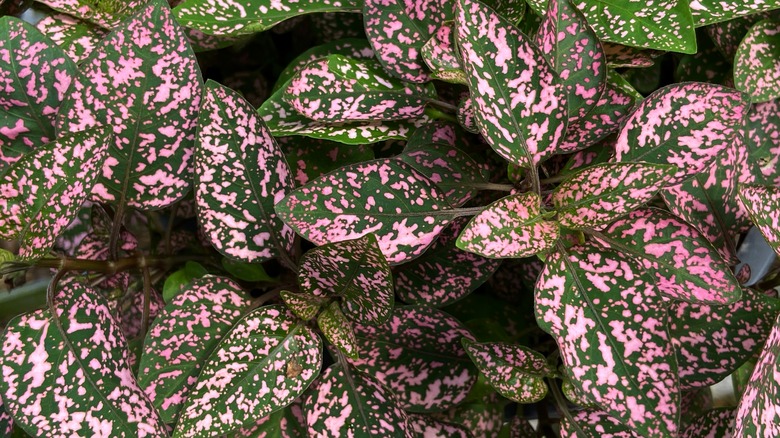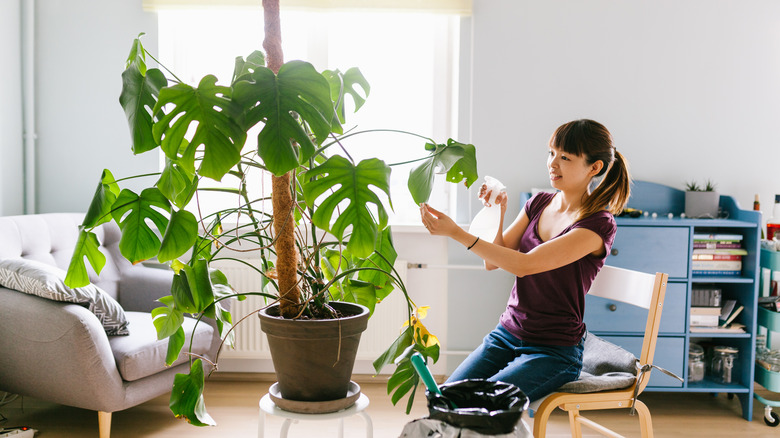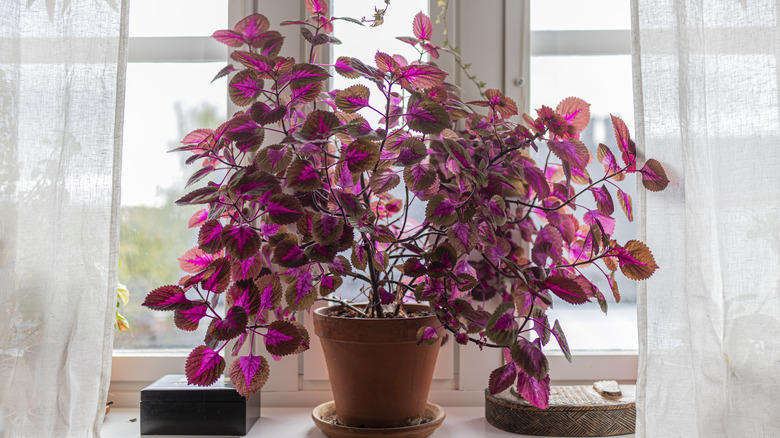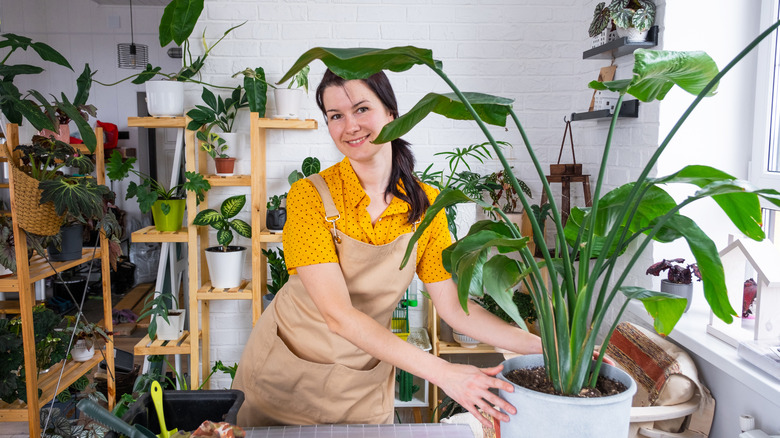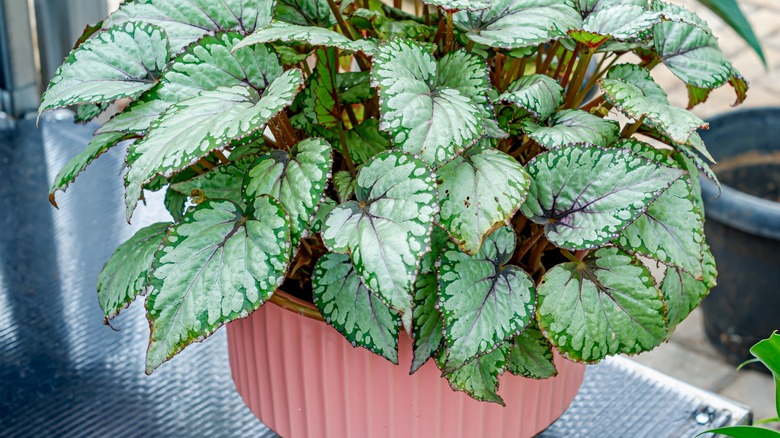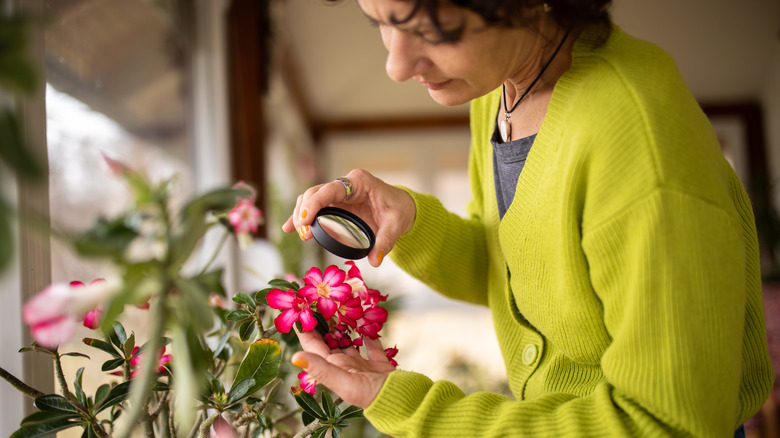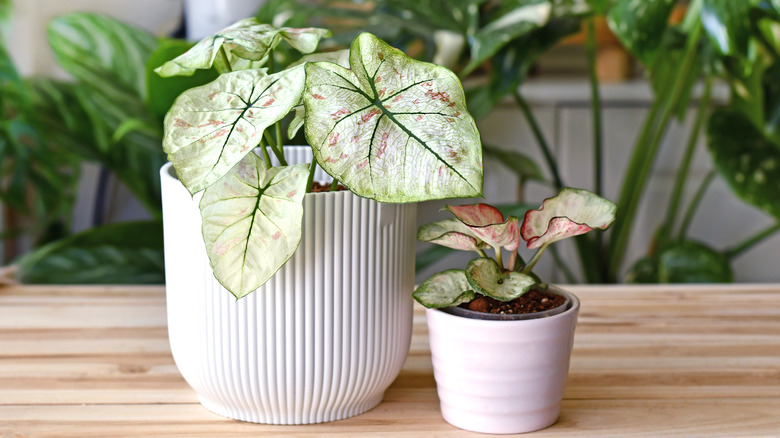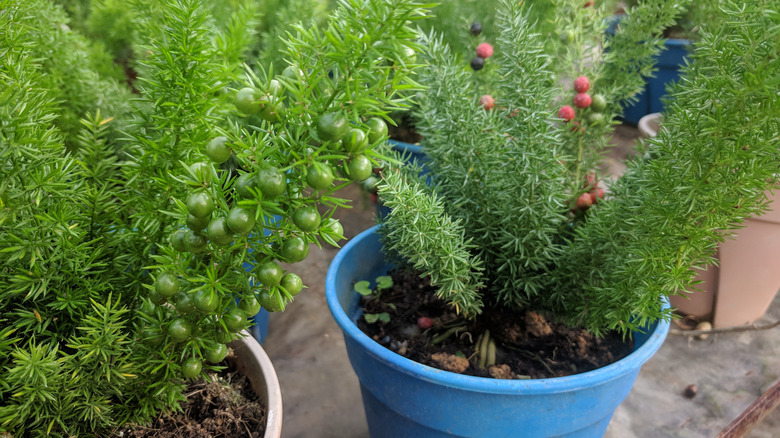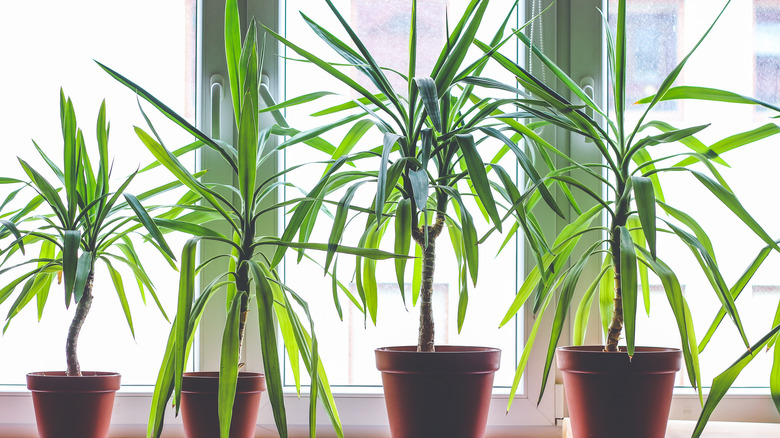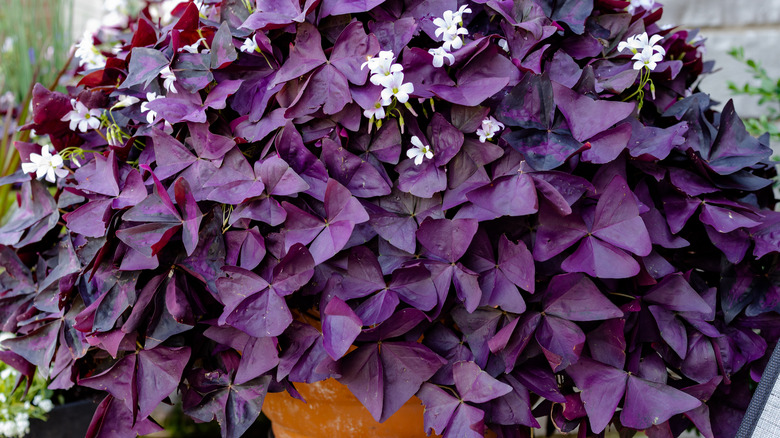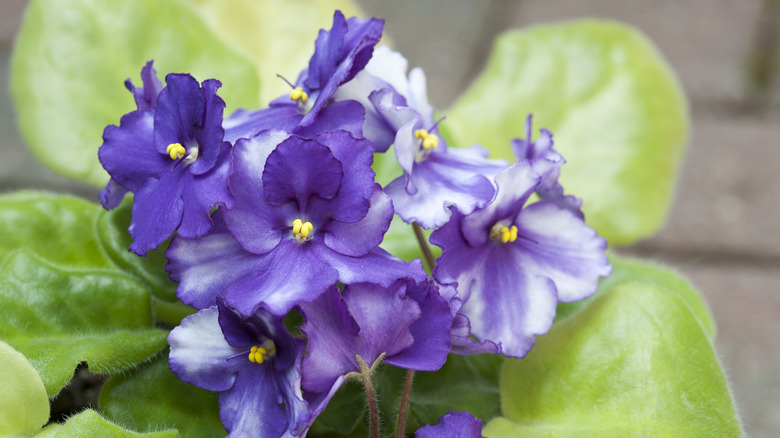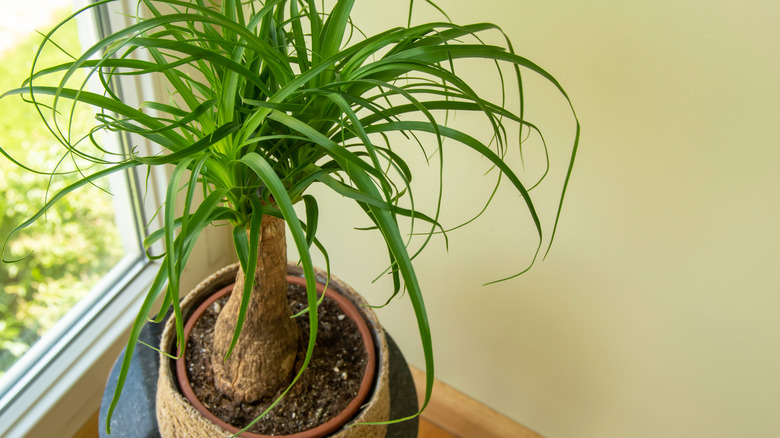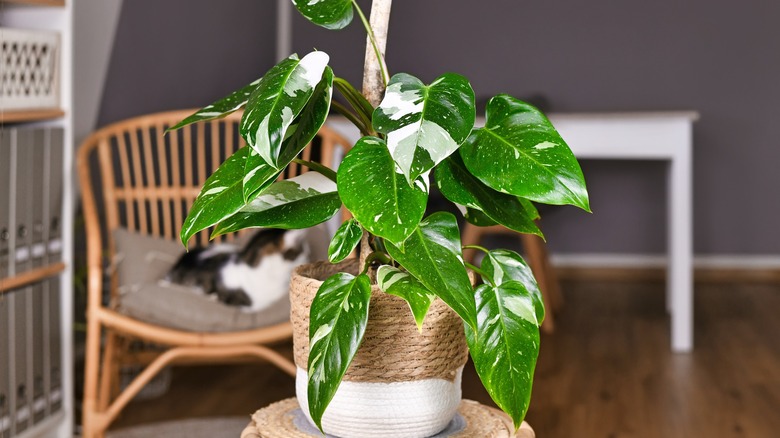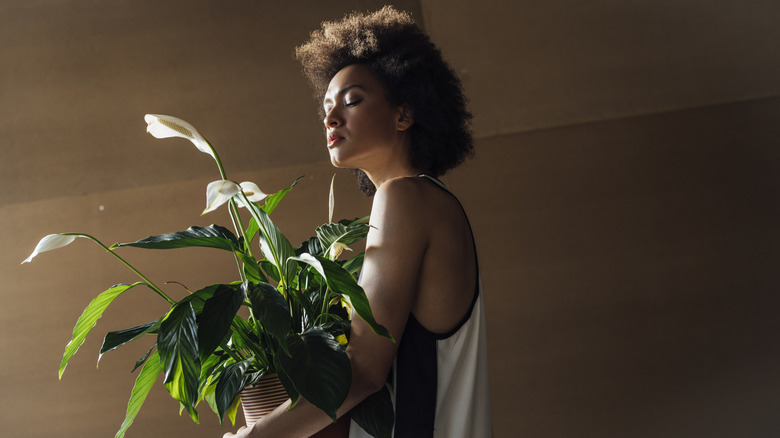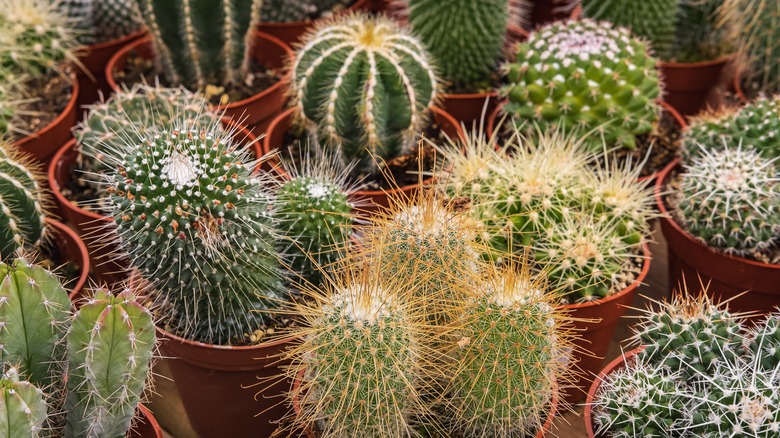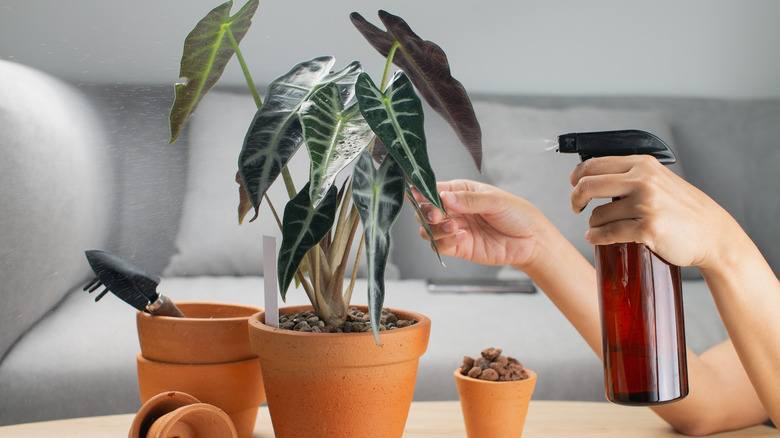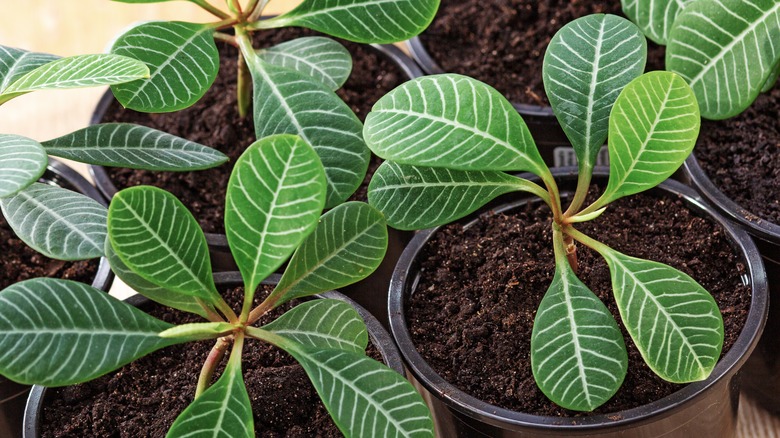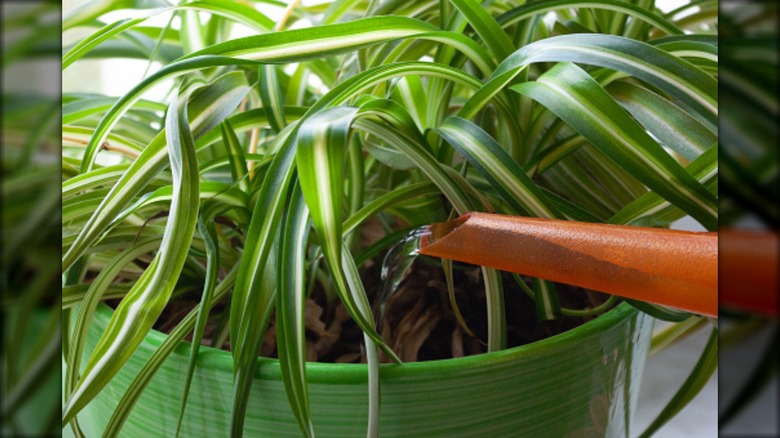18 Beautiful Houseplants You Can Grow From Seed
Are you looking to start your houseplant collection? Plant lovers will tell you that once you have one, you'll want more and more. That's because houseplants brighten up any space and provide many benefits, like cleaner air and improved mood. Many enthusiasts propagate cuttings to get their collection started, but there's a certain pride that comes with growing a plant from seed. We've compiled a list of 18 beautiful houseplants you can grow from seed without being a master gardener.
These species range from delicate-looking flowers to large and dramatic plants with striking leaves. Most of these species are suitable for plant novices but will still delight those with a seasoned green thumb. Though many houseplants are from tropical regions, they will thrive in an indoor setting if their needs are met. When selecting a plant, consider the light required and how much your home can provide. For example, if you have a basement unit or another dwelling with low lighting, you'll want to select a plant that needs more shade and less direct sunlight. Picking out new plants is a fun process; this list will help you get started.
Polka Dot Plant
The polka dot plant (Hypoestes phyllostachya) is a tropical houseplant known for its pink-speckled leaves. There are multiple cultivars with a range of sizes and colors. Polka dot plants thrive in humid conditions. Mist the leaves with water in the drier winter months to keep the plant happy and healthy.
Bloom Season: Late summer or fall
USDA Growing Zone: 10 to 11
Growing Conditions: Bright, filtered sun
Soil Type: Moist, well-draining
Size: Up to 30 inches tall and wide
Monstera Deliciosa
It may seem difficult to grow such a large plant from seeds, but it's absolutely possible — you should try it! The grand monstera deliciosa, also known as the Swiss cheese plant, is often the pride and joy of any house plant collection. This plant can grow to great heights but typically remains under 8 feet tall when grown indoors.
Bloom Season: Summer
USDA Growing Zone: 10 to 12
Growing Conditions: Partial or dappled sun
Soil Type: Well-draining with an acidic or neutral pH
Size: 3 to 15 feet tall and 3 to 8 feet wide
Coleus
Coleus is a member of the mint family with a variety of cultivars, including the vibrant rainbow coleus. It's a beginner-friendly house plant that is easy to grow from seeds. It needs minimal attention, and many cultivars thrive on a windowsill.
Bloom Season: Late summer
USDA Growing Zone: 10 to 11
Growing Conditions: Partial shade, but some cultivars thrive in full sun
Soil Type: Moist and well-draining loose soil with organic matter and a slightly acidic or neutral pH
Size: 6 to 36 inches tall and wide
Bird of Paradise
The striking bird of paradise (Strelitzia reginae) is a gorgeous addition to any home. Though its bird-like flowers won't bloom until the plant is mature, the broad leathery leaves will bring a beautiful green color to your space. A bird of paradise grown from seed typically takes between three and five years to grow its famous flowers.
Bloom Season: Late winter or early spring
USDA Growing Zone: 10 to 12
Growing Conditions: Full sun but will tolerate partial sun
Soil Type: Loamy and slightly acidic
Size: 3 to 5 feet wide and two to four feet wide
Rex Begonia
There are many types of begonia. Outside, you're more likely to find the flower-heavy cultivars. Inside, the rex begonia makes for an attractive houseplant. Growing a rex begonia from seed is possible but not recommended for beginning gardeners. These plants thrive in higher humidity and should be placed near an east-facing window for most of the year. Depending on your region, you can relocate it during the summer.
Bloom Season: Mid-spring to mid-fall
USDA Growing Zone: 7 to 12
Growing Conditions: Partial sun, shade
Soil Type: Moist and well-draining with a slightly acidic pH
Size: 6 to 20 inches tall and 10 to 18 inches wide
Desert Rose
The delightful desert rose (Adenium obesum) is worth growing for its gorgeous pink flowers. It thrives in warmer temperatures of at least 75 degrees, so it's ideal if you live in a warm, humid area. This plant does best when it is watered regularly and allowed to dry completely before watering again.
Bloom Season: Late winter, early spring
USDA Growing Zone: 11 to 12
Growing Conditions: Full, direct sun for at least six hours a day
Soil Type: Moist, well-draining, and rich in organic matter
Size: 3 to 9 feet tall and 3 to 5 feet wide
Caladium
Caladiums are known for their beautiful heart-shaped leaves that come in several colors like bright pink, translucent white, green, and purple. They are grown from bulbs and are considered a beginner-friendly houseplant. They're also a great companion plant to coleus, another vibrant and easy-to-grow plant. Place your caladiums in a room with high moisture like a bathroom. Periodically mist the leaves in between watering.
Bloom Season: Mid-spring to fall
USDA Growing Zone: 8 to 11
Growing Conditions: Partial shade to shade
Soil Type: Moist, well-draining with organic matter
Size: 12 to 30 inches tall for most cultivars
Foxtail Fern
Foxtail ferns (Asparagus densiflorus) are fun plants with a lot of texture and bright red fruits. They are hardy plants that grow best with soft light. While other plants thrive on a bright window sill, you'll want to keep your foxtail fern in indirect light. Too much light will burn the leaves.
Bloom Season: Spring
USDA Growing Zone: 9 to 11
Growing Conditions: Partial sun
Soil Type: Moist and well-draining with an acidic, neutral, or slightly alkaline pH
Size: 2 to 3 feet tall and wide
Dragon Tree
The dragon tree (Dracaena draco) is a popular indoor tree that fights mold and purifies the air. They're considered beginner-friendly and a great plant for new gardeners. Soak your seeds in water for about three days before planting for a faster growing process.
Bloom Season: Spring
USDA Growing Zone: 10 to 12
Growing Conditions: Bright, indirect sun
Soil Type: Loamy and moist with an acidic or neutral pH
Size: 15 to 20 feet tall and 3 to 10 feet wide
Oxalis
Also known as a shamrock and lucky clover, oxalis is beloved for its unique appearance and leafy clusters. Available in many cultivars and colors, oxalis grows from bulbs. Cultivars like oxalis triangularus grow best where they receive bright morning light but are shaded from the hot afternoon sun.
Bloom Season: Summer
USDA Growing Zone: 5 to 10
Growing Conditions: Full sun and partial shade
Soil Type: Loamy with a normal to slightly alkaline pH
Size: 2 to 18 inches tall
African Violet
African violets (Saintpaulia ionantha) are small, slow-growing, and stunning. They have received a reputation for being delicate, but they're quite easy to grow so long as they're put in the right spot. Place your plants near a north or east-facing window during the warmer months, and then relocate them to a south or west-facing window in the winter.
Bloom Season: Summer
USDA Growing Zone: 5 to 10
Growing Conditions: Full sun, will tolerate partial shade
Soil Type: Loamy and well-draining with a slightly acidic, neutral, or slightly alkaline pH
Size: 6 to 9 inches tall and wide
Ponytail Palm
Ponytail palms (Beaucarnea recurvata) are hardy desert trees that will make you feel like a master gardener. They're incredibly easy to grow, provided they aren't overwatered. Because the plant stores water in its trunk, it can become waterlogged quite quickly. Give your plant the best start by planting it in cacti or succulent potting mix and setting the pot in a sunny room.
Bloom Season: Summer through early fall
USDA Growing Zone: 9 to 11
Growing Conditions: Bright, indirect sunlight
Soil Type: Well-draining with a neutral pH
Size: Up to 30 feet tall
Philodendron
Philodendrons are one of the most popular houseplants because they are beginner-friendly, full of character, and are a known air purifier. Many plant lovers choose to grow philodendron cultivars, like the heart leaf variety, in hanging baskets to enjoy the cascading vines.
Bloom Season: Summer
USDA Growing Zone: 9 to 11
Growing Conditions: Partial sun
Soil Type: Loamy and well-draining with an acidic pH
Size: 1 to 20 feet tall and 1 to 6 feet wide, depending on the cultivar
Peace Lily
Peace lilies (Spathiphyllum spp.) are as easy to grow as they are beautiful. There are several peace lily varieties that you can successfully grow indoors. Proper placement is the best way to set your plant up for success. Place the peace lily where it'll receive bright but indirect light and keep it out of the path of A/C or heating units for better temperature regulation.
Bloom Season: Spring
USDA Growing Zone: 11-12
Growing Conditions: Bright and indirect light
Soil Type: Moist and well-draining with an acidic pH
Size: 1 to 4 feet tall
Cacti and succulents
While many cacti and succulents are propagated by cutting, you can grow your own from seeds. You'll first need to choose from one of the over 2,000 species of cacti native to the Americas. Plant your seeds in a cactus or succulent potting mix and place the pot on a bright window sill. Keep them cool in winter and allow the soil to dry between waterings.
Bloom Season: Late spring, early summer
USDA Growing Zone: 1 to 12, depending on the cultivar
Growing Conditions: Bright, full sun
Soil Type: Well-draining and sandy
Size: Varies depending on cultivar
Elephant's Ear
Elephant's ear (Alocasia) is an attractive houseplant with long heart-shaped leaves and deep veins. There are over 80 species of alocasia, many of which are easy to grow from seed. It should be noted that while it is a popular indoor plant, it is poisonous if consumed and can cause contact dermatitis if handled inappropriately.
Bloom Season: Spring through summer
USDA Growing Zone: 10 to 12
Growing Conditions: Bright, indirect light
Soil Type: Loamy or sandy and well-draining with a 6.0 to 8.0 pH
Size: 2 to 9 feet tall
Madagascar Jewel
As its name would suggest, the Madagascar jewel (Euphorbia leuconeura) is gorgeous. It is a flowering succulent that is attractive even when not in bloom. Compared to other succulents, it's a bit more forgiving when overwatered. It is cold-sensitive and must be moved to a warmer spot during winter. As the plant grows, you may need to stake it to prevent drooping.
Bloom Season: Spring and summer but can produce small white false flowers year-round
USDA Growing Zone: 9 to 11
Growing Conditions: Partial shade, indirect sun
Soil Type: Rocky and well-draining
Size: Up to 6 feet tall
Spider Plant
Most house plant enthusiasts know the joy of owning a spider plant (Chlorophytum comosum). Not only are they a beginner-friendly, show-stopping plant, but NASA has also praised their ability to purify the air. Start the plant by seed and transfer it to a hanging pot once it begins to grow.
Bloom Season: Spring, summer, and fall
USDA Growing Zone: 9 to 11
Growing Conditions: Part sun, partial shade
Soil Type: Well-draining with a neutral pH
Size: 12 to 24 inches tall and 12 to 36 inches wide
